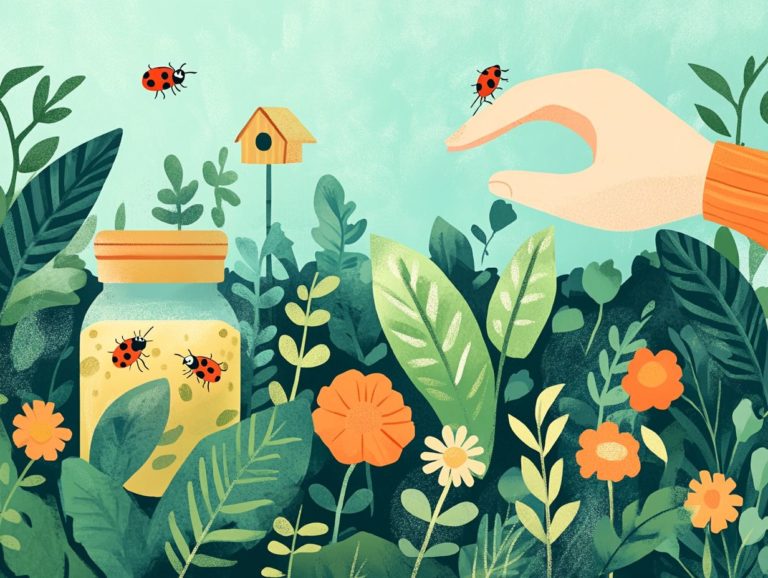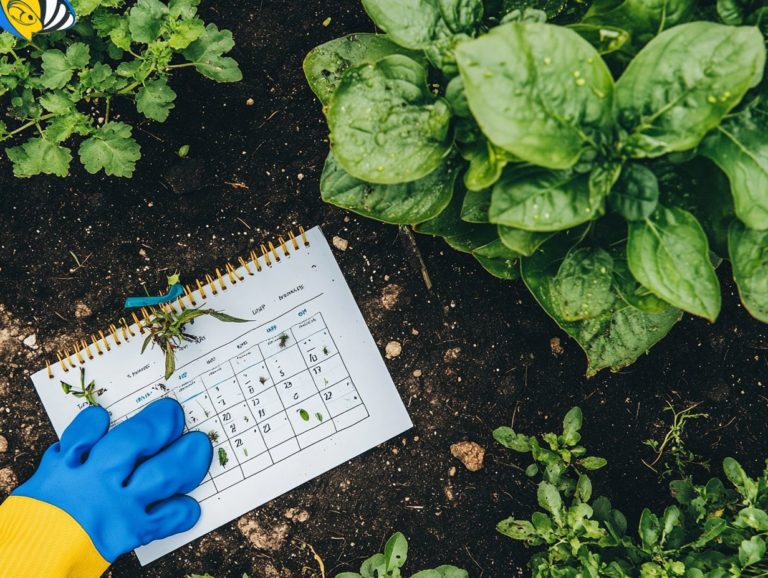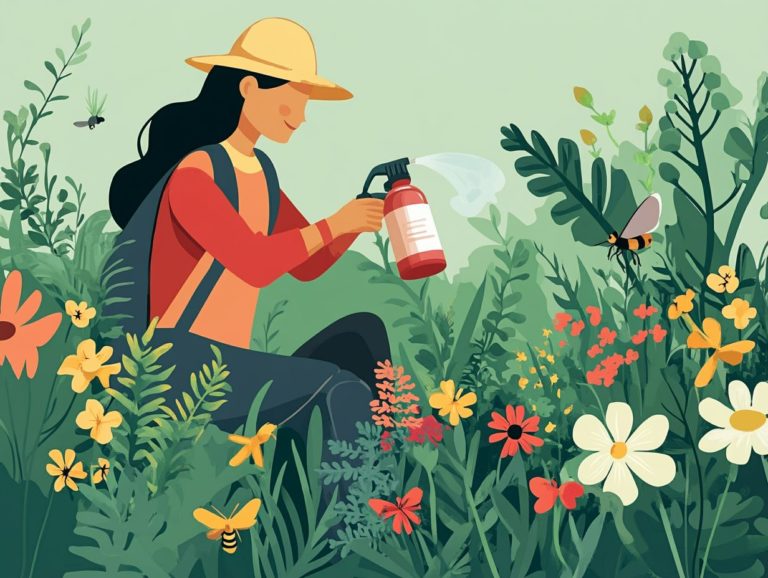Understanding Pest Resistance and Its Impacts
Pest resistance presents a significant challenge in modern agriculture, jeopardizing both crop yields and biodiversity. As pests evolve, they become increasingly skilled at bypassing traditional control methods, resulting in serious repercussions for farmers and the environment.
Let s dive into what causes pest resistance and why it matters. We ll explore the underlying factors contributing to this pressing issue while examining its extensive impacts. You ll discover effective strategies for managing resistance and explore emerging technologies that promise innovative solutions for the future.
Engage with us as we navigate this critical topic and uncover pathways toward sustainable pest management.
Contents
- Key Takeaways:
- Understanding Pest Resistance: What You Need to Know
- Causes of Pest Resistance
- Impacts of Pest Resistance
- Strategies for Managing Pest Resistance
- Future Outlook on Pest Resistance
- Frequently Asked Questions
- Why is it important to understand pest resistance?
- What is pest resistance and how does it occur?
- What are the impacts of pest resistance, including environmental contamination?
- How can pest resistance be managed or prevented?
- Can pest resistance be reversed?
- Are there any alternatives to chemical pesticides for managing pest resistance?
Key Takeaways:
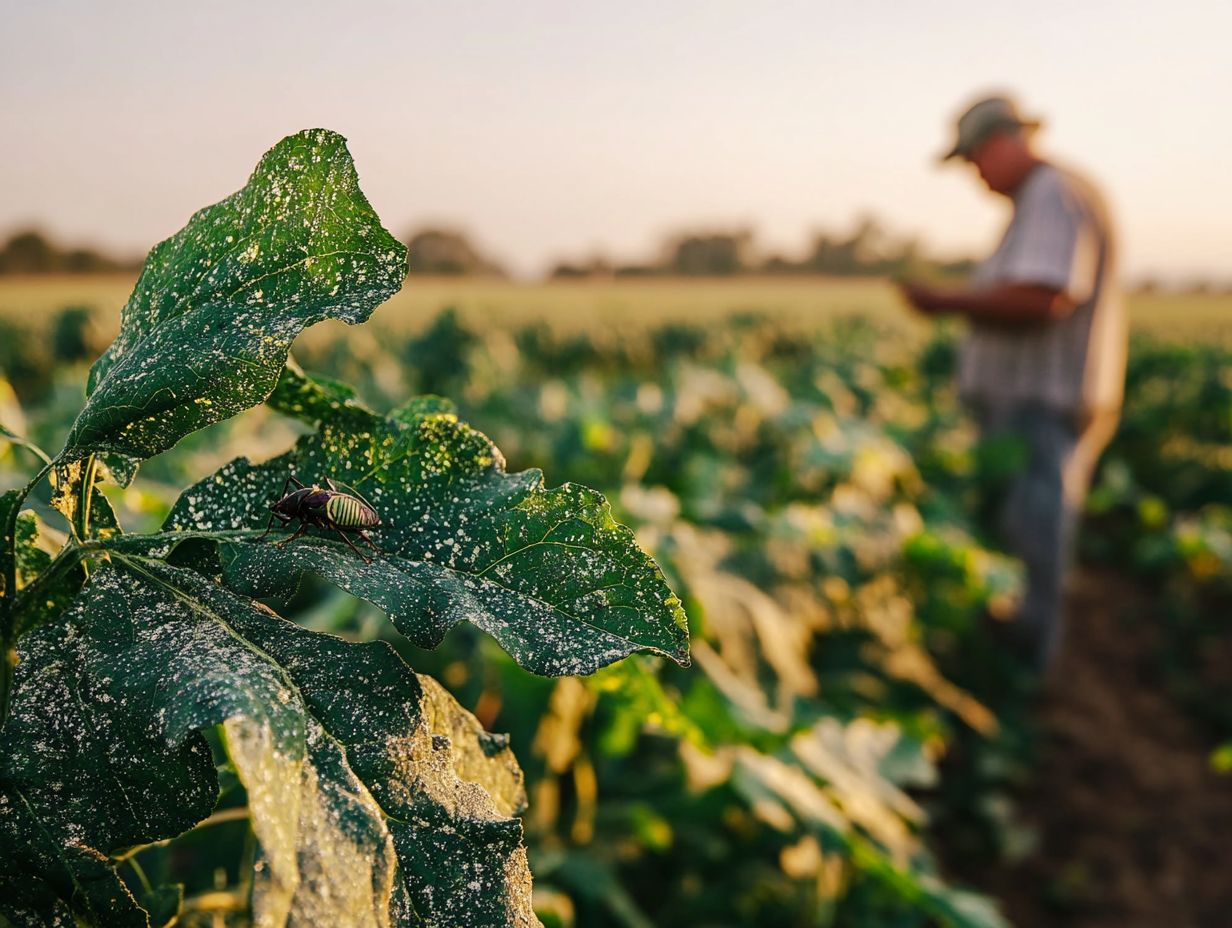
- Pest resistance means pests are less affected by pesticides, leading to more damage.
- Overusing pesticides and genetic changes in pests contribute to resistance.
- This resistance can cause significant losses for farmers and harm beneficial insects.
Understanding Pest Resistance: What You Need to Know
Pest resistance signifies the declining efficacy of pesticides like insecticides and herbicides in managing pest populations. This decline primarily arises from the emergence of genetic traits within these organisms.
The process unfolds when specific individuals in a pest population withstand chemical treatments and subsequently transmit their resistance traits to future generations. This creates a formidable challenge for pest management strategies in agriculture, ultimately impacting both crop yields and environmental health.
Causes of Pest Resistance
Pest resistance largely stems from the selection pressure created by the frequent application of pesticides in agriculture. As these chemicals are used repeatedly, certain pests develop mechanisms to survive, resulting in populations that are increasingly resilient to various control measures.
This dynamic creates a more formidable challenge in managing pest populations effectively.
Factors that Contribute to Resistance
Understanding how traits are passed down among pest populations is crucial in this dynamic. Several key factors contribute to pest resistance, including genetic variability within pest populations, an overreliance on chemical control methods, and environmental influences that affect pest survival and reproduction.
Among these, herbicide resistance stands out, often arising from the repeated exposure of certain crops to specific chemical treatments. This practice leads to the selection of resistant individuals within the pest population. Similarly, insecticide resistance can develop when pests are subjected to consistent applications of insecticides, allowing only those with genetic traits that enable them to endure the chemicals to survive.
Population genetics plays a vital role in this scenario, as it determines how quickly resistance traits can proliferate within a population. Environmental factors, such as temperature and humidity, further influence pest life cycles and reproduction rates, complicating pest management strategies.
For instance, climate changes can accelerate pest reproduction, thereby increasing the likelihood of developing resistance. This reality underscores the necessity for more integrated pest management practices to effectively address these challenges.
Impacts of Pest Resistance
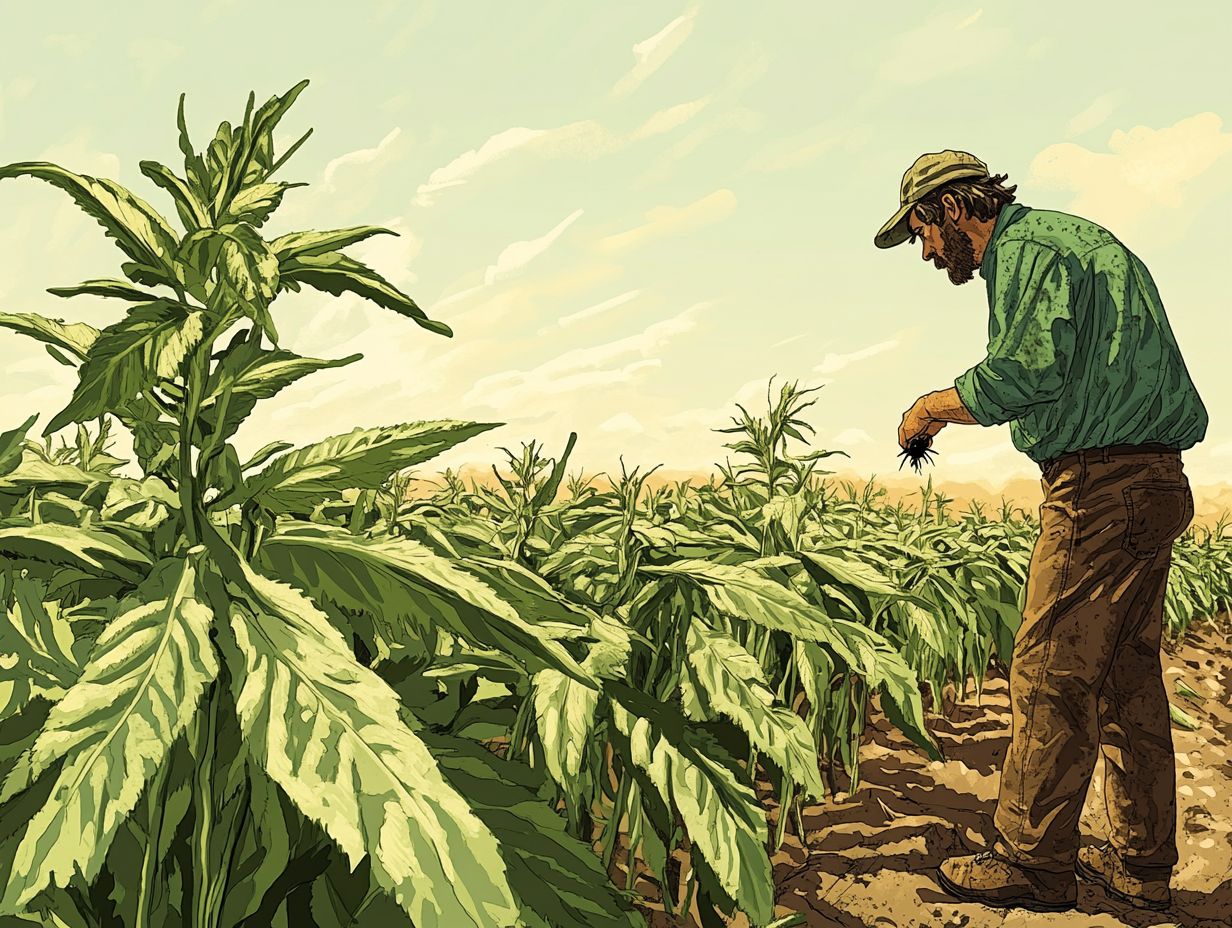
The impacts of pest resistance on agriculture and the environment are substantial, resulting in increased crop losses and elevated costs for farmers.
This challenge also contributes to greater environmental contamination, as the escalating use of chemical controls to manage resistant pest populations becomes necessary.
Join us in exploring smarter pest management solutions that protect our crops and our planet!
Effects on Agriculture and the Environment
The effects of pest resistance on agriculture and the environment present a complex challenge, leading to diminished efficacy of pest control measures, escalating pest populations, and increased environmental contamination from the heavier reliance on chemicals.
This scenario creates a vicious cycle. You frequently resort to higher doses of pesticides to manage resistant pests, which boosts agricultural runoff. For instance, a study from the Midwest highlighted that regions grappling with high pest resistance experienced pesticide application rates soaring by as much as 30%. This uptick ultimately resulted in toxic levels infiltrating nearby water sources.
Such escalation poses a significant threat to non-target species, including beneficial insects and aquatic life, disrupting delicate ecosystems. Case studies indicate alarming trends in biodiversity loss linked to pesticide overuse. This underscores the urgent need for integrated pest management strategies that prioritize environmental health while maintaining agricultural productivity.
Strategies for Managing Pest Resistance
Implementing effective resistance management strategies is crucial for combating pest resistance. This often involves embracing integrated pest management (IPM) practices that seamlessly blend chemical applications with biological control methods and the cultivation of resistant crop varieties.
By taking a holistic approach, you can enhance your agricultural practices and significantly mitigate the challenges posed by pest resistance.
Preventive and Mitigating Measures
Preventive and mitigating measures are essential in your battle against pest resistance. This includes diversifying your crops, alternating pesticide classes to reduce selection pressure, and fostering a balanced ecosystem through biological control methods.
You can enhance your pest management strategies by adopting practices like crop rotation. This practice disrupts pest life cycles by varying the types of plants grown in a specific area. Consider intercropping planting complementary crops together not only does this improve biodiversity, but it also attracts beneficial insects that help keep pest populations in check.
Choosing resistant crop varieties can greatly decrease the chances of pest infestations, providing a sustainable approach that minimizes the need for chemical inputs. These strategies work synergistically to create a resilient agricultural system, effectively mitigating the risks associated with pest resistance.
Future Outlook on Pest Resistance
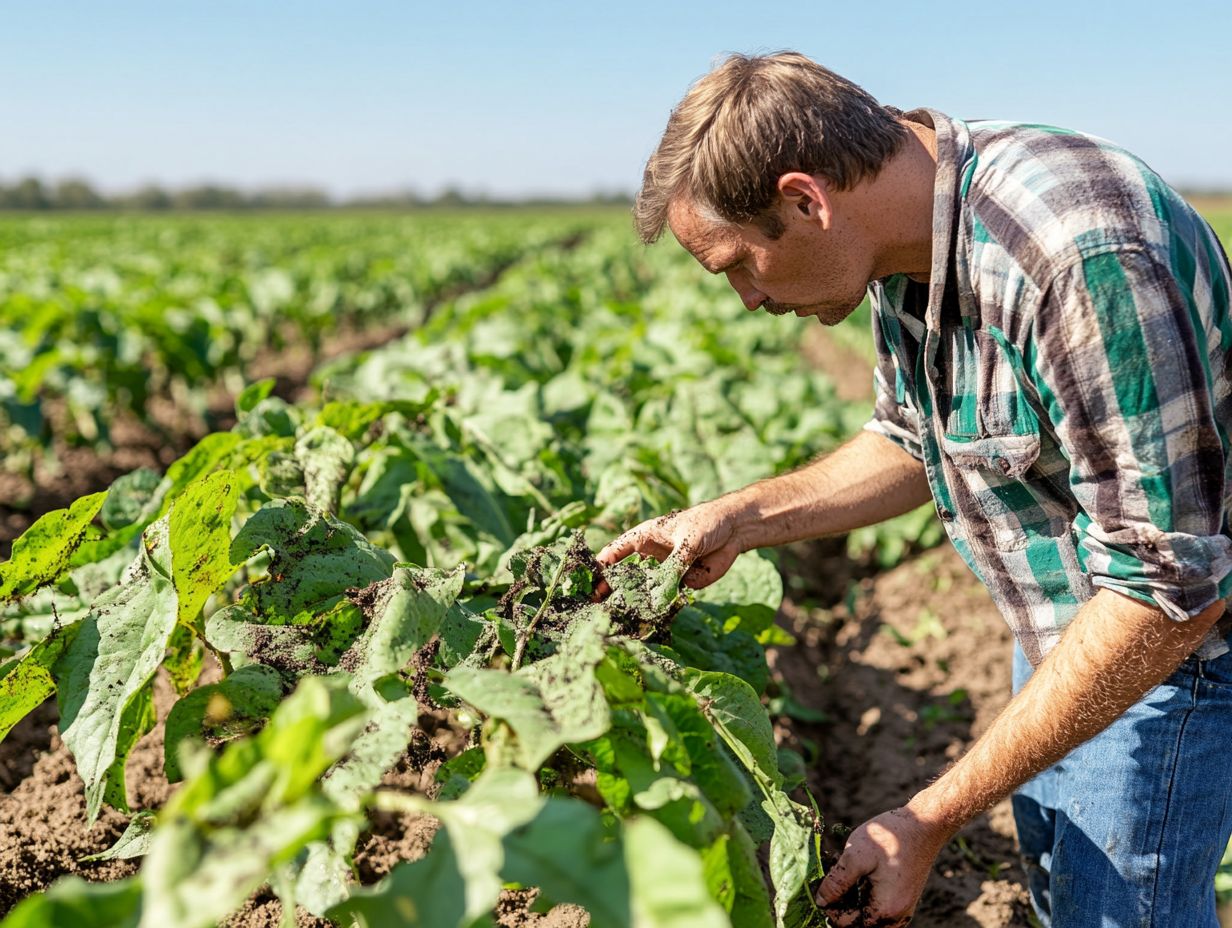
Exciting advancements in pest resistance management are just around the corner! Innovative technologies and strategies are emerging to enhance pest control.
These advancements aim to lessen our dependence on chemical pesticides. This shift will promote sustainability in agriculture.
Emerging Technologies and Solutions
Emerging technologies like genetic editing and precision agriculture have the potential to revolutionize pest control, empowering you with more targeted and efficient strategies that significantly reduce reliance on broad-spectrum pesticides.
Take, for instance, the innovative use of drones for monitoring pest populations. This technology allows you to gather real-time data, making informed decisions based on precise observations. A California farm exemplified this approach by employing drone technology to detect harmful pest infestations, resulting in a significant reduction in pesticide use as they targeted only the affected areas.
Automated pest detection systems are making their mark as well. Equipped with advanced imaging, these sensors can pinpoint pest hotspots, enabling quicker interventions. Biotechnological solutions like genetically modified crops are designed to resist specific pests, showcasing how scientists are working together to enhance crop resilience while minimizing chemical interventions.
Collectively, these innovations paint a promising picture for the future of sustainable pest management, placing powerful tools in your hands.
Frequently Asked Questions
Why is it important to understand pest resistance?
Understanding pest resistance, including pesticide and fungicide resistance, is crucial for sustainable pest management and protecting agricultural crops. It allows for the development of effective control strategies and helps reduce the negative impacts of pesticide use on the environment and human health.
What is pest resistance and how does it occur?
Pest resistance is the ability of pests to survive and reproduce despite exposure to pest control methods. This occurs due to genetic mutations or natural selection, where pests become immune to the effects of pesticides or other control measures.
What are the impacts of pest resistance, including environmental contamination?
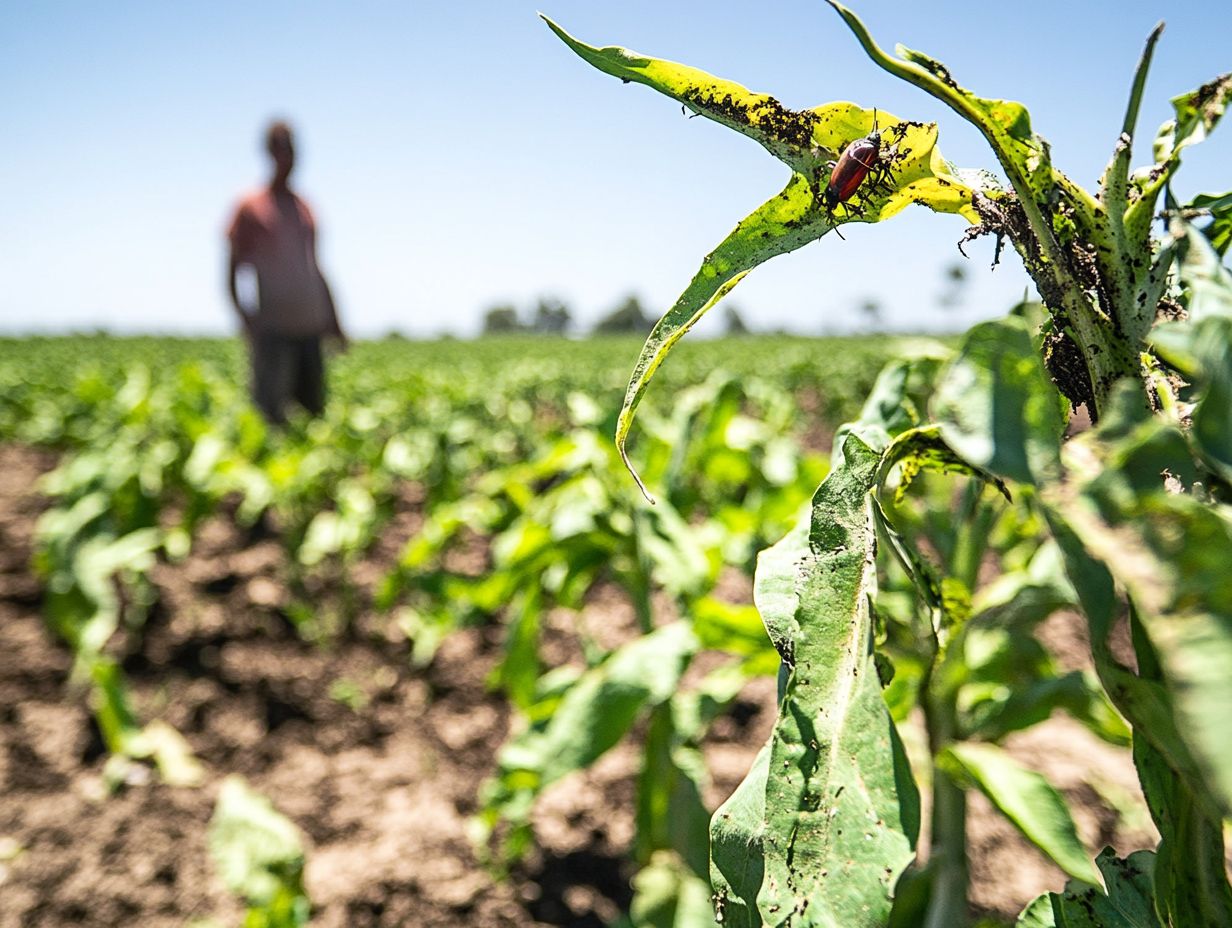
The impacts of pest resistance can be significant. It can lead to increased crop damage, reduced effectiveness of pest control methods, and higher costs for farmers and consumers.
This situation may also result in the use of stronger and more toxic pesticides. Such actions pose risks to human health and the environment, increasing the danger of environmental contamination.
How can pest resistance be managed or prevented?
Pest resistance can be managed using integrated pest management strategies. These strategies combine different pest control techniques such as cultural practices, biological methods, and chemical solutions.
It s important to rotate pesticide use and utilize different active ingredients to prevent pests from developing resistance.
Can pest resistance be reversed?
In some cases, pest resistance can be reversed by reducing the use of certain pesticides and allowing natural predators to control pest populations. However, completely reversing resistance is difficult once established, making prevention essential.
Are there any alternatives to chemical pesticides for managing pest resistance?
Yes, several alternatives to chemical pesticides can help manage pest resistance. These include cultural practices like crop rotation, using natural predators such as beneficial insects, and implementing physical barriers or traps to prevent infestations.
Furthermore, genetically modified crops with specific traits can also play a role in pest management.

